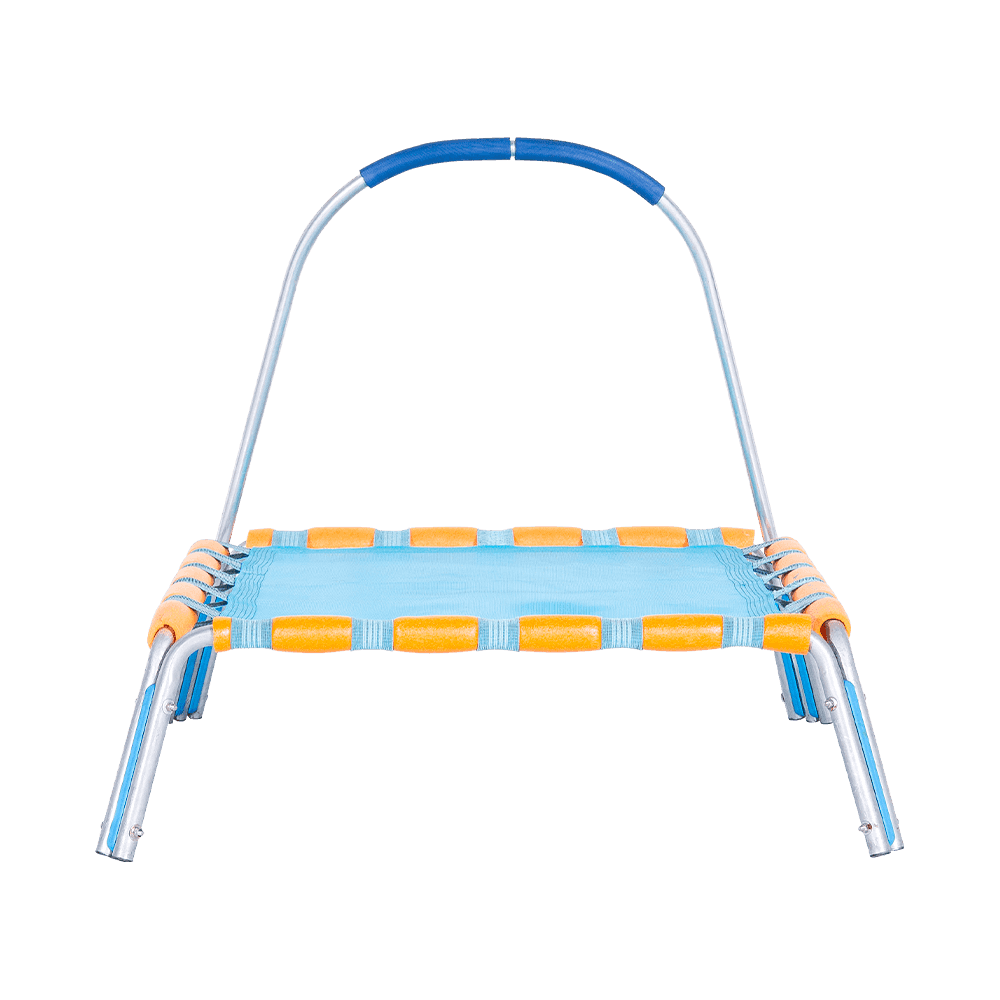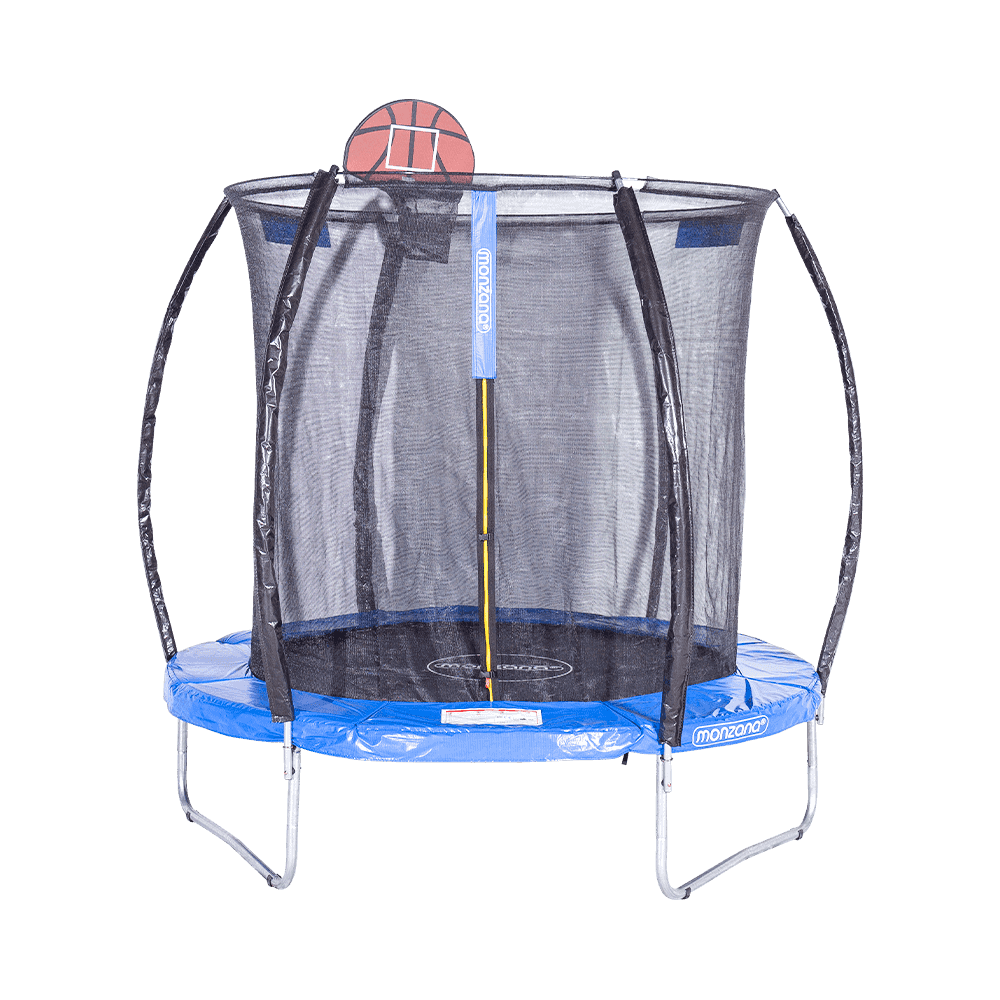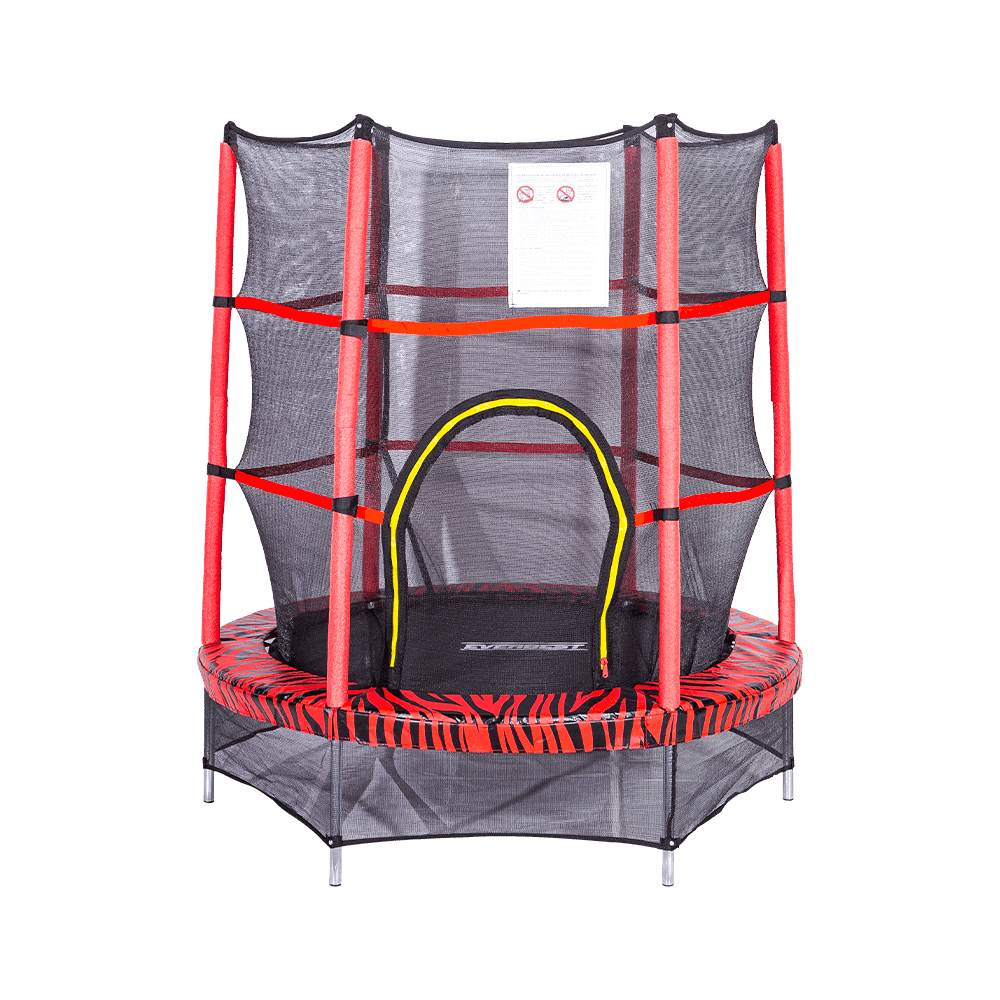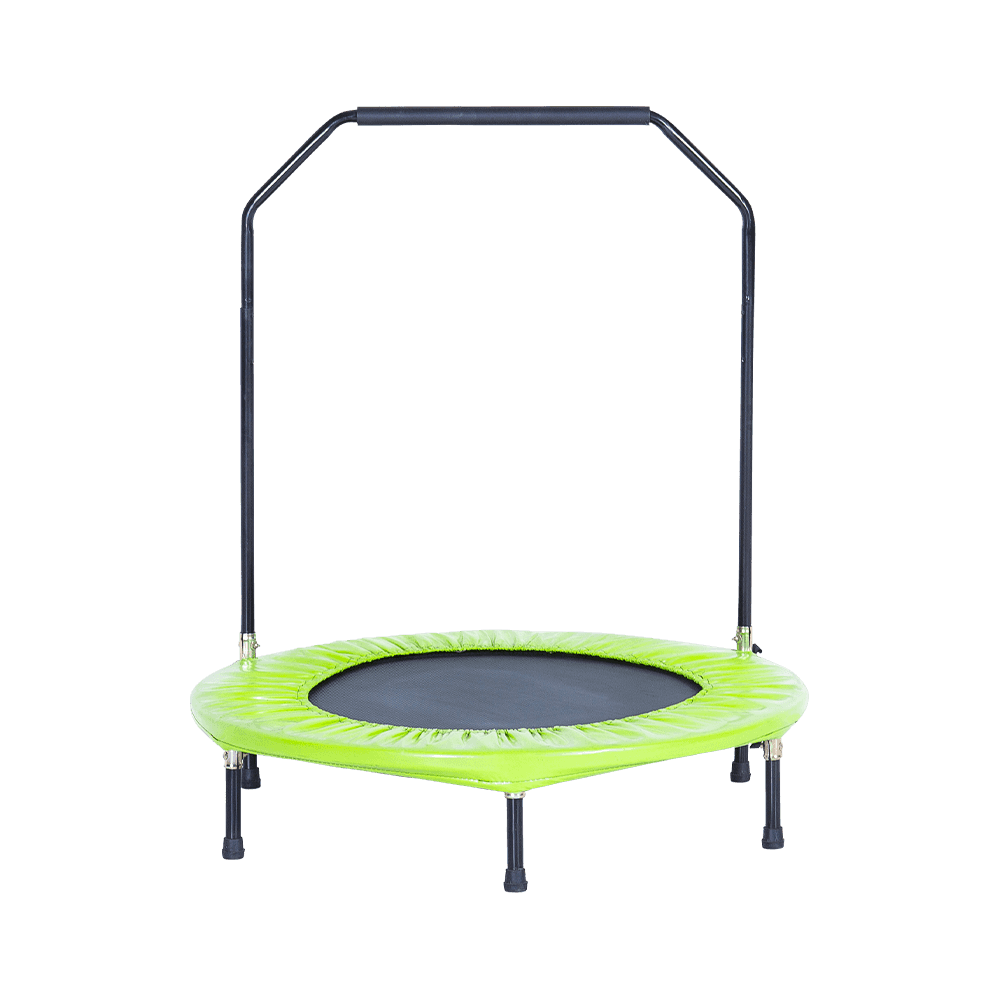What’s the Difference Between Indoor and Outdoor Mini Trampolines?
So, you’ve decided to invest in a mini trampoline (often called a rebounder). It’s a fantastic choice for low-impact cardio, improving lymphatic drainage, and just having fun. But as you start your search, you quickly realize there’s a big question to answer: do you need one for indoor fitness or outdoor recreation?
While they might look similar at a glance, indoor and outdoor mini trampolines are designed with vastly different environments and purposes in mind. Choosing the wrong one can lead to premature wear, safety issues, and a disappointing experience. This guide will break down the key differences to help you make the perfect choice for your home and health goals.
The Core Distinction: It’s All About the Elements
The most fundamental difference lies in their intended location and the enemies they are built to fight.
An indoor rebounder is engineered for a controlled environment. Its primary adversaries are floor scuffs and noise. It’s designed for fitness, physical therapy, and quiet bouncing.
An outdoor trampoline is built as a piece of sporting equipment that must withstand a constant assault from nature. Its enemies are the sun’s UV rays, rain, humidity, wind, and temperature fluctuations. Its design prioritizes durability and weather resistance over quiet operation.
Let’s dive into the specific areas where these differences become clear.
Frame and Construction: The Backbone of Durability
This is where the battle against the elements is won or lost.
Outdoor Mini Trampolines: The frame is the most critical component. To prevent rust and corrosion, outdoor models almost exclusively use galvanized steel. This process involves coating the steel in a protective layer of zinc, making it highly resistant to moisture. You’ll often find thicker gauge steel and more robust welding points on outdoor models to handle more vigorous, playful jumping and the stress of being left outside. The overall weight is also higher, which helps it stay grounded in windy conditions.
Indoor Mini Trampolines: While still sturdy, frames can be made from standard steel or sometimes aluminum alloys since they aren’t exposed to rain. The focus is less on extreme rust-proofing and more on keeping the unit lightweight and easy to move around your living room, garage, or home gym. Many include plastic end caps or full covers to protect your flooring, not the trampoline itself.
Spring System: Bounce Quality and Noise
How you get your bounce is a major differentiator in performance and placement.
Indoor Rebounders: This is where you see the most innovation for home use. Indoor models typically use either traditional metal coil springs or elastic cord (bungee) systems.
Metal Springs: Provide a powerful, classic bounce. The main drawback is they can be noisy (squeaking and metal-on-metal sounds) and require occasional lubrication.
Bungee Cords (No-Spring Rebounders): These have become incredibly popular for “quiet rebounders for apartments”. They offer a very smooth, near-silent bounce and eliminate the pinching hazard of traditional springs. They are almost exclusively found on indoor models as the elastic material can degrade quickly in sunlight.
Outdoor Mini Trampolines: You will almost always find traditional galvanized steel springs. They are chosen for their power, responsiveness, and, crucially, their ability to withstand weather. The bounce is typically more vigorous, which is ideal for kids doing tricks or higher jumps. Noise is not a primary concern for outdoor use.
Mat Material: Strength vs. Sensitivity
The jumping surface is your point of contact, and its material is chosen based on stress and weather exposure.
Outdoor Mats: These are made from a thick, durable polypropylene or PVC mesh that is UV-resistant. This treatment is vital; without it, the sun’s rays would cause the mat to become brittle and crack within a single season. The weave is tight and strong to handle shoes, dirt, and leaves.
Indoor Mats: While still durable, the mat material may prioritize feel over extreme weather resistance. Some high-end fitness rebounders use a perforated mesh that allows for better air flow and a softer feel on bare feet. Since they aren’t UV-exposed, they don’t require the same level of sun protection, but this also means they would degrade rapidly if used outdoors.

Safety Features: Enclosures and Stability
Safety is paramount, but it manifests differently for each type.
Outdoor Models: Due to the higher, more playful bouncing and often uneven ground (grass, dirt), stability is key. They feature wide, sturdy legs, often with angled designs for a larger footprint. Many outdoor mini trampolines come with a safety net enclosure, a must-have feature if children will be using it to prevent falls onto the hard ground.
Indoor Models: The primary safety feature is stability on smooth floors. They usually have rubberized or padded leg tips to prevent slipping and scratching your hardwood or laminate floors. While some may offer attachable handlebars for balance during fitness routines, full safety enclosures are rare, as the controlled environment and type of bouncing (controlled rebounding vs. play-jumping) present less risk of a dangerous fall.
Intended Use and Performance: Fitness vs. Fun
This is the heart of your decision. Align the trampoline’s design with your primary goal.
The Indoor Rebounder (The Fitness Tool):
Purpose: Designed for low-impact exercise, rehabilitation, lymphatic system stimulation, and improving balance.
Bounce: The bounce is often tighter and more controlled. Bungee models offer a gentler, joint-friendly rebound. It’s about rhythmic motion, not height.
User: Typically one adult or a child under supervision for fitness. Weight limits are important to check for fitness models.
The Outdoor Mini Trampoline (The Play Equipment):
Purpose: Designed for play, burning off energy, and practicing simple tricks.
Bounce: The bounce is higher and more energetic, fueled by stiffer springs. It’s built for laughter and activity.
User: Often meant for kids. The construction can handle more dynamic and unpredictable movement.
Placement and Maintenance Considerations
Your environment dictates the required upkeep.
Outdoor Maintenance: Even with galvanized steel, some upkeep is required. Ideally, you should cover it with a weatherproof trampoline cover when not in use to protect the mat and springs from prolonged UV exposure and to keep the jumping surface dry and clean. Regularly checking for rust spots and tightening bolts is also recommended. Placing it on level ground is crucial for stability.
Indoor Maintenance: Maintenance is minimal. Simply wipe down the mat and frame occasionally to remove dust and sweat. The main consideration is storage—folding rebounders are popular for saving space in apartments. The primary concern is protecting your floor and downstairs neighbors from noise and vibration; an exercise mat placed underneath can help with both.
Can You Use an Indoor Trampoline Outside (and Vice Versa)?
This is a common question with a straightforward answer.
Taking an Indoor Rebounder Outside: This is not recommended. Even for a single afternoon, exposure to sunlight can begin to degrade a non-UV-resistant mat and bungee cords, making them brittle and prone to snapping. The frame is not rust-proofed, and moisture from grass will accelerate corrosion. You also risk damaging the legs on uneven ground.
Bringing an Outdoor Trampoline Inside: This is possible but highly impractical. Outdoor trampolines are heavier, bulkier, and designed for weather resistance you don’t need indoors. The galvanized steel frame may scratch hardwood or tile floors. Most importantly, the powerful, noisy spring system will be loud and potentially disruptive indoors, and the higher bounce may be dangerous with low ceilings.
Making Your Final Choice: Key Questions to Ask Yourself
To decide which type is right for you, answer these questions:
Where will it live 99% of the time? (This is your most important answer).
Who is the primary user? (An adult for fitness or children for play?)
What is your priority: a quiet, gentle bounce or a high, energetic bounce?
What are your weather conditions? (If outdoors, do you have intense sun or rain?)
What is your storage solution? (Do you need to fold it away after each use?)
Conclusion
While both provide the joy of bouncing, indoor and outdoor mini trampolines are specialized tools. The indoor rebounder is a precision fitness instrument, prioritizing joint health, quiet operation, and compact storage. The outdoor mini trampoline is a rugged piece of play equipment, built to endure the elements and provide a thrilling bounce for years to come.
By understanding the critical differences in their construction, materials, and intended use, you can invest with confidence, ensuring your new mini trampoline is a perfect—and lasting—fit for your home, your health, and your happiness.
If you have any questions, please fill out the contact form at the bottom of the page and contact us.







